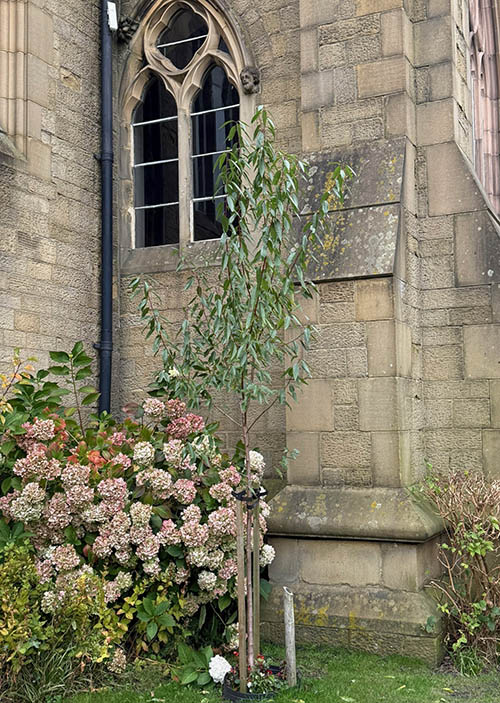Almond Tree (Prunus dulcis)
Map Position: 16The use of almonds can be traced to Bronze Age. Almonds are eaten on their own or as addition to other foods, especially cakes, many sweets, and desserts and more. The almond tree displays its flowers before its leaves show: this unusual pattern was in ancient mythology with divinity and tragic love.
Biblical

When Jacob tended Laban’s sheep and his own, he used a trick to breed his flock rather than Laban’s using sticks of various woods, including almond: see also “plane” and “poplar”. Most scholars agree that it is not entirely clear from the wording in the Bible how Jacob achieved this selective breeding (Genesis 30.37). An attempt of explanation is made by S. B. Noegel in his article “Sex, Sticks, and the Trickster in Gen.30:31-43: A New Look at an Old Crux” in the Journal of Ancient Near Eastern Society 25 (1997).
The story of Joseph and his brothers is one of the best known in the Bible. When his brothers were sent to Egypt by their father Jacob, he advised them to take some gifts with them, including almonds (Genesis 43.11).
The Lord gave detailed instructions how the sanctuary for him was to be built; only the best materials should be used, among other things he wanted “cups made like almonds” (Exodus 25.33 -34) and these were carried out exactly as requested (Exodus 37.19 and 20).
Aaron had a rod that sprouted, put forth buds, produced blossoms and “bore ripe almonds”, thus showing that the Lord had chosen him (Numbers 17.8).
Ecclesiastes reminds us that the health and strength of our youth will vanish as we will grow older and explains this with reference to the almond tree that blossoms in spring (Ecclesiastes 12.5).
When the Lord send Jeremiah as a prophet to the nations Jeremiah argued that he was not suitable for the big task. The Lord, however, showed him a rod which Jeremiah identified as almond thus proving his knowledge (Jeremiah 1.11).
